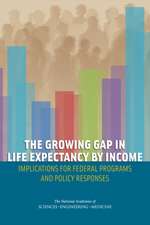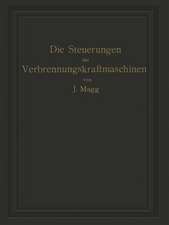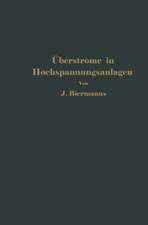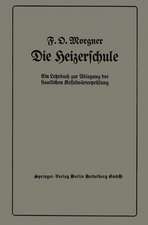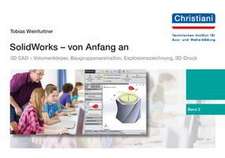Recovery of Materials and Energy from Urban Wastes: A Volume in the Encyclopedia of Sustainability Science and Technology, Second Edition: Encyclopedia of Sustainability Science and Technology Series
Editat de Nickolas J. Themelis, A.C. (Thanos) Bourtsalasen Limba Engleză Hardback – 13 ian 2019
This volume in the Encyclopedia of Sustainability Science and Technology, Second edition, provides a comprehensive overview of complementary strategies for dealing with waste in and around urban areas: Waste-to-energy power plants (WTEs) and recycling. Chapters in this volume describe how these plants can be built within or near cities to transform the non-recycled residues of society into electricity and heat, and the recovery of metals using recycling technology and management techniques. The latter includes resource recovery from construction and demolition and electronic waste streams.
With nearly one thousand WTE plants worldwide, waste incineration has become increasingly important as a means of closing the materials life- cycle loop. China leads in the beneficial use of these residues with about 30 new WTEs built in each of the last three years, and with plans for at least another 300 with one or more in each large city. In addition, increasing numbers of cement plants use "waste" materials as alternative fuels. Since currently all of these plants combust less than 20% of the available wastes, and the remainder ends up in landfills or dumps, this sector represents a huge market in the making.This comprehensive reference is suitable for readers just entering the field, but also offers new insights for advanced researchers, industry experts, and decision makers.
Din seria Encyclopedia of Sustainability Science and Technology Series
- 18%
 Preț: 1682.11 lei
Preț: 1682.11 lei - 18%
 Preț: 2124.06 lei
Preț: 2124.06 lei - 18%
 Preț: 2113.02 lei
Preț: 2113.02 lei - 24%
 Preț: 2357.25 lei
Preț: 2357.25 lei - 24%
 Preț: 1495.37 lei
Preț: 1495.37 lei - 24%
 Preț: 1749.79 lei
Preț: 1749.79 lei - 24%
 Preț: 2364.21 lei
Preț: 2364.21 lei - 24%
 Preț: 1832.16 lei
Preț: 1832.16 lei - 24%
 Preț: 1782.06 lei
Preț: 1782.06 lei - 24%
 Preț: 1598.81 lei
Preț: 1598.81 lei - 24%
 Preț: 2094.83 lei
Preț: 2094.83 lei - 23%
 Preț: 1559.75 lei
Preț: 1559.75 lei - 5%
 Preț: 1857.49 lei
Preț: 1857.49 lei - 24%
 Preț: 1577.55 lei
Preț: 1577.55 lei - 32%
 Preț: 3971.53 lei
Preț: 3971.53 lei - 26%
 Preț: 2631.17 lei
Preț: 2631.17 lei
Preț: 2362.86 lei
Preț vechi: 3109.03 lei
-24% Nou
Puncte Express: 3544
Preț estimativ în valută:
452.19€ • 467.14$ • 376.34£
452.19€ • 467.14$ • 376.34£
Carte tipărită la comandă
Livrare economică 21-27 martie
Preluare comenzi: 021 569.72.76
Specificații
ISBN-13: 9781493978496
ISBN-10: 1493978497
Pagini: 562
Ilustrații: XVII, 545 p. 320 illus., 258 illus. in color.
Dimensiuni: 178 x 254 x 26 mm
Greutate: 1.54 kg
Ediția:1st ed. 2019
Editura: Springer
Colecția Springer
Seria Encyclopedia of Sustainability Science and Technology Series
Locul publicării:New York, NY, United States
ISBN-10: 1493978497
Pagini: 562
Ilustrații: XVII, 545 p. 320 illus., 258 illus. in color.
Dimensiuni: 178 x 254 x 26 mm
Greutate: 1.54 kg
Ediția:1st ed. 2019
Editura: Springer
Colecția Springer
Seria Encyclopedia of Sustainability Science and Technology Series
Locul publicării:New York, NY, United States
Cuprins
Construction and Demolition Wastes.- Fly Ash.- Gasification and Liquefaction Alternatives to Incineration in Japan.- Greenhouse gas emission reduction by Waste-to-Energy.- Hitachi Zosen Inova technology.- Incinerator Grate Combustion Phenomena.- Life Cycle Comparison of Waste-to-Energy to Sanitary Landfill.- Martin Waste-to-Energy Technology.- Plasma-assisted Waste-to-Energy Processes.- Recycling Technologies.- Solid Waste Disposal and Recycling, Environmental Impacts.- Thermal Treatment of Waste: Key Element for Sustainable Waste Management.- Waste Collection and Transport.- Waste Management for Sustainable Society.- Waste Materials in Construction, Utilization of.- Waste-to Energy: Decreasing the Entropy of Solid Wastes and Increasing Metal Recovery.- Waste-to-Energy Ash Management in Europe.- Waste-to-Energy Ash Management in United States.- Waste-to-Energy Facilities as Power Plants.- Waste-to-Energy for District Heating.- Waste-to-Energy using Refuse-derived Fuel.- Waste-to-Energy, Introduction.- Waste-to-Energy: Energy Resource in Solid Wastes.- Waste-to-Energy: Fluidized Bed Technology.
Notă biografică
Nickolas J. Themelis Earth and Environmental Engineering, Columbia University, New York City, NY, USA
Dr. Themelis obtained his B.Eng. (British Association Medal for Great Distinction) and Ph.D. degrees from McGill University (Montreal, Canada). In the first part of his career, he developed metallurgical processes for the extraction of copper and other metals, including his beingVice President of the Technology of Kennecott Corporation, the largest copper company in the world at that time. He
joined Columbia University in 1980 where he was Chair of the School of Mines and later first Chair of the new Department of Earth and Environmental Engineering. He is Founder of Columbia’s Earth Engineering Center and of the Global WTERT Council (GWC). Prof. Themelis is elected member of the US National Academy of Engineering and the coauthor of the waste management section in the 2014 International Panel for Climate Change (IPCC).
joined Columbia University in 1980 where he was Chair of the School of Mines and later first Chair of the new Department of Earth and Environmental Engineering. He is Founder of Columbia’s Earth Engineering Center and of the Global WTERT Council (GWC). Prof. Themelis is elected member of the US National Academy of Engineering and the coauthor of the waste management section in the 2014 International Panel for Climate Change (IPCC).
A. C. (Thanos) Bourtsalas is Adjunct Assistant Professor at the Earth and Environmental Engineering Department of Columbia University, and he is Manager of the Earth Engineering Center-Columbia (WTERT, US).
Dr. Bourtsalas graduated from the Earth and Environmental Engineering Department of Columbia University and did his Ph.D. at Imperial College London. He is involved in many advisory projects globally for the development of pre-feasibility and feasibility studies of integrated waste managements that achieve maximum, commercially viable, extraction and recycling of usable materials, combined with energy recovery from the remaining residual waste (Waste-to-Energy, WTE). He is the Principal Investigator for a project funded by the Columbia Global Centers and is related to the advancement of waste management in Latin America. He is Senior Advisor at an experts committee appointed and coordinated by the United Nations Economic Commission for Europe (UNECE) for the development of Guidelines on Public and Private Partnerships (PPP) forWaste to Energy projects. He was member of the technical advisory panel of Singapore’s Environmental Protection Agency for the development of environmental guidelines for the beneficial utilization of Waste-to-Energy Bottom Ash. He is also a coauthor to the “Solid Waste” chapter of the Assessment Report on Climate Change and Cities (ARC3-2), developed by the Earth Institute of Columbia University and presented at the COP-21 in Paris.
Dr. Bourtsalas graduated from the Earth and Environmental Engineering Department of Columbia University and did his Ph.D. at Imperial College London. He is involved in many advisory projects globally for the development of pre-feasibility and feasibility studies of integrated waste managements that achieve maximum, commercially viable, extraction and recycling of usable materials, combined with energy recovery from the remaining residual waste (Waste-to-Energy, WTE). He is the Principal Investigator for a project funded by the Columbia Global Centers and is related to the advancement of waste management in Latin America. He is Senior Advisor at an experts committee appointed and coordinated by the United Nations Economic Commission for Europe (UNECE) for the development of Guidelines on Public and Private Partnerships (PPP) forWaste to Energy projects. He was member of the technical advisory panel of Singapore’s Environmental Protection Agency for the development of environmental guidelines for the beneficial utilization of Waste-to-Energy Bottom Ash. He is also a coauthor to the “Solid Waste” chapter of the Assessment Report on Climate Change and Cities (ARC3-2), developed by the Earth Institute of Columbia University and presented at the COP-21 in Paris.
Caracteristici
Provides an excellent example of industrial ecology where technology mimics the age-old ecological cycle Introduces the importance of combining recycling and waste to energy (WTE) in attaining sustainable waste management Describes in detail the dominant WTE technologies of moving grate and circulating fluid bed Covers the use of non-recycled plastics and paper, and other “wastes” as alternative fuels in cement plants Includes energy from both renewable and non-renewable waste sources Includes supplementary material: sn.pub/extras

